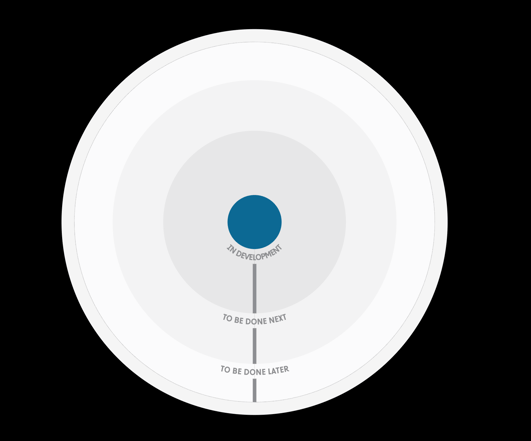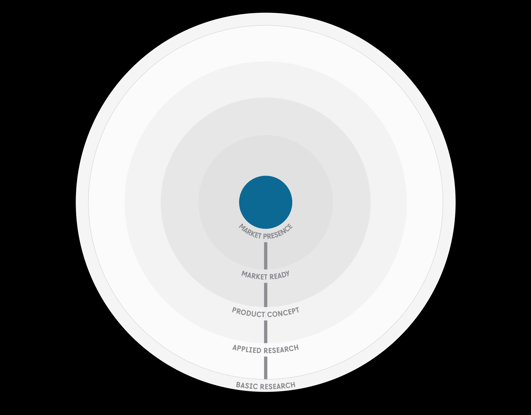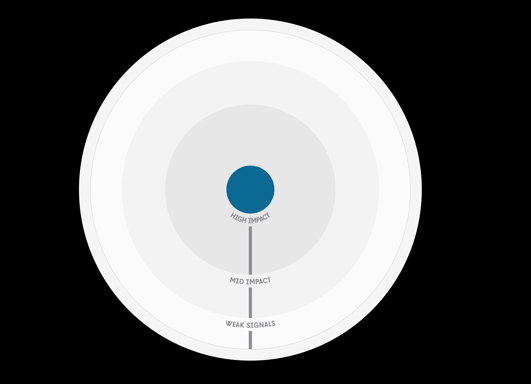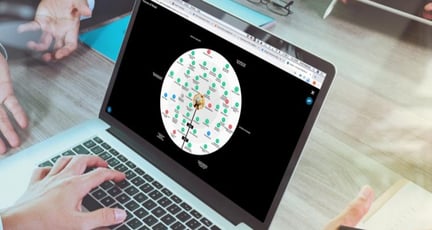Radars are a great way to visualize the view of the future of different themes and contexts.
Futures Platform existing phenomena provide a rich database of validated information created by a team of future foresight experts and futurists. The team of futurists update the content on the platform continuously in order to provide an updated view of the future to our clients.
Futures Platform has phenomena from all industries globally, covering all different aspects (political, economical, society, technological and environmental). This allows you to have a holistic view of the future and to discover trends that are coming outside of your own industry.

Some examples what radars can be used for:
- Master Radar for Organization’s Overall Strategy
- Innovation and R&D Radar
- Risk Management Radar
- Industry Trends Radar
- Markets Radar
- Politics / Economy / Society / Technology / Environment Radar
- Phenomena Research and Evaluation Radar
- Product and Service Development Radar
- Competition Radar
- Collaboration and Crowdsourcing Radar
- And many others
Radars for different use cases
Radars can be used for different use cases such as innovation and R&D, strategy development / stress-testing, risk management, trend monitoring etc. The amount and the names of the ranges on the radar can be adjusted, as well as the amount of them. See pictures below for inspiration. In this article you can find instructions on how to edit the radar.



Want to access digital radar reports created by a team of futurists?
Our futurists have created and update 38 digital radar reports for different themes. These are containing the most relevant global phenomena for the domain. The phenomena on the radars are put on a timeline to demonstrate the highest point of impact of the phenomena. These radars can be used as they are, or you can use it as a validated starting point to start customizing it to your needs. See the full list of digital radar reports and how to create a radar here.
Examples of Organisation's Radars
Industry Trends Radar
Futures Platform has phenomena from all industries globally. This way you can create an industry-specific radar or combine different industries to one radar by using the radar sectors.
You can gather for example:
- Energy-specific trends
- Transportation trends
- Mobile technology trends
- Consumer habits trends
- Economic trends
- Political and regulatory trends
- Sports and entertainment trends
Markets Radar
The trends and phenomena on Futures Platform database are global trends. This way you can create market-specific radars by selecting the relevant trends for your region to a radar. You can also add your own phenomena (check here to see how) to add more in-depth trends for a specific region.
You can gather for example:
- Existing markets monitoring for regulatory, taxation and perception changes
- New markets monitoring for opportunity identification and investigation
- Industry landscape monitoring in specific market(s)
Politics, Economy, Society, Technology, Environment Radar
The Futures Platform Radar functionalities allow for trends to be grouped, categorized and placed in a meaningful manner. You can either create a radar for each view-point or use one radar and place these as sectors of the radar.
The ability to mix existing Futures Platform phenomena with custom client-specific phenomena also allows users to quickly create radars “on the fly” to cater to specific needs.
Phenomena Research and Evaluation
As Futures Platform provides a 360-view of the future by providing phenomena and trends from all industries globally, it enables the discovery and evaluation of a variation of themes and trends. As the content database is updated continuously and new phenomena are being added on a continuous basis it allows clients to discover, research and evaluate phenomena as a continuous activity, mitigating the risks of missing out on information.
The built-in collaboration tools, voting and rating, allow organisations to evaluate the information and to start working with it (click here to read more about the collaboration tools).


